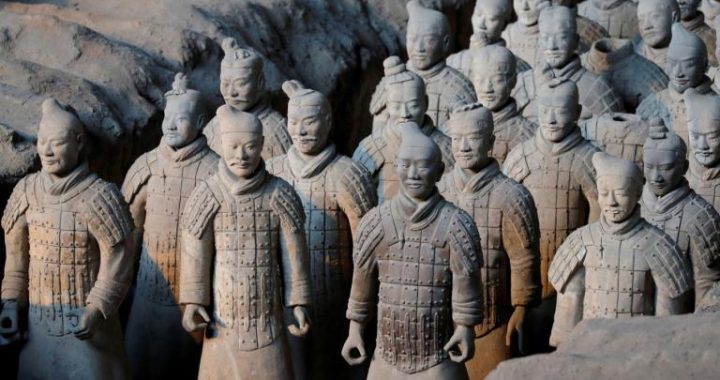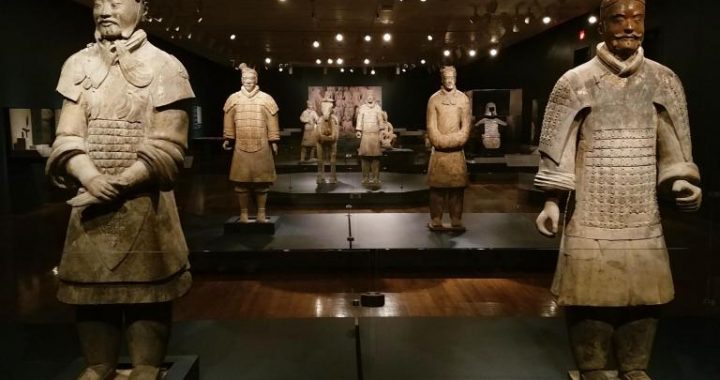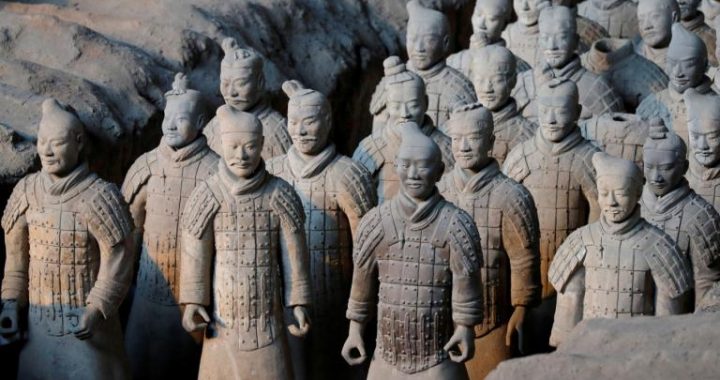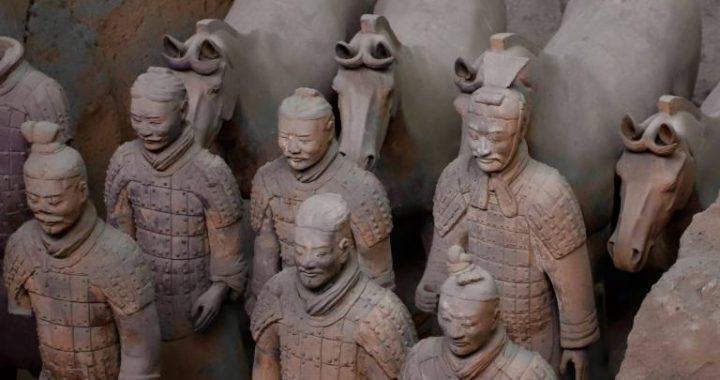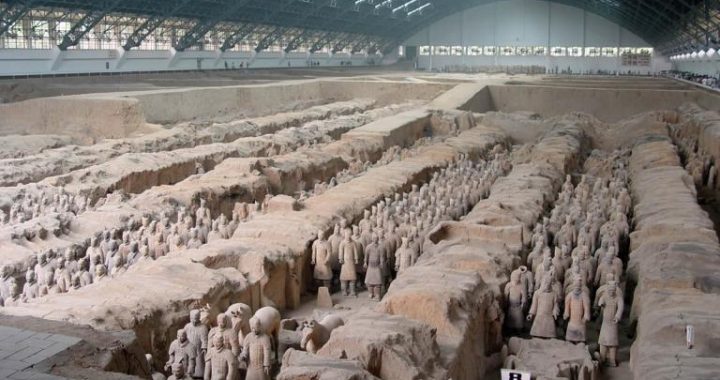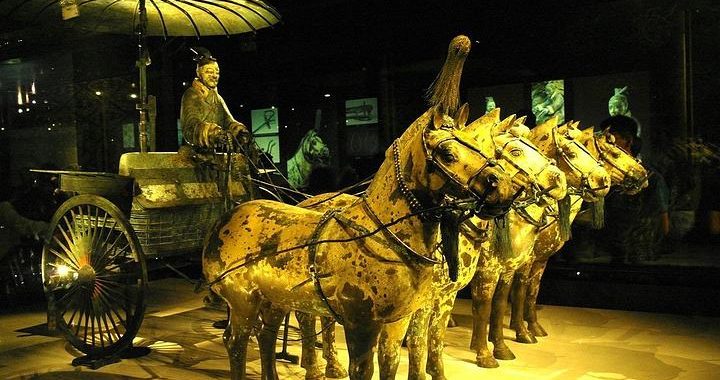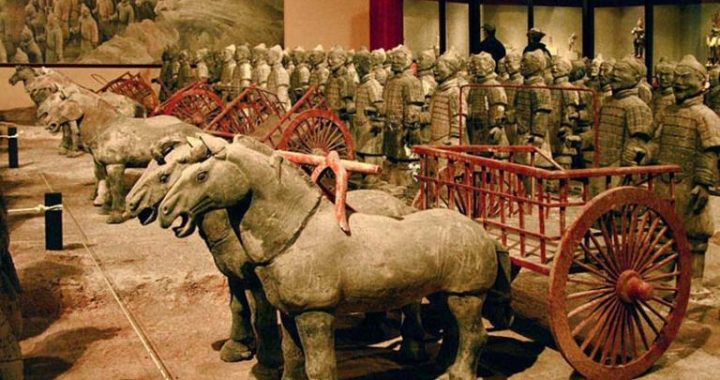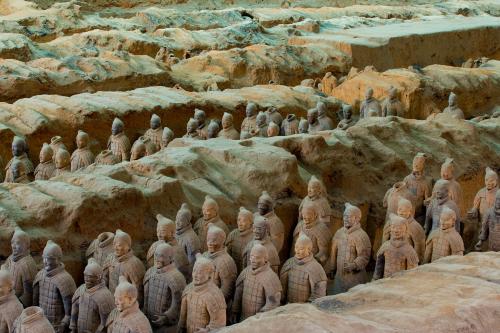the terracotta warriors
3 min read221 BC, for the first time in its history, China was united under one emperor, Qin Shihuang of the Qin dynasty. The Qin emperor’s influence far outlived his short dynasty standardized writing, mo, money, weights and measures into one centralized bureaucracy.ik many autocrats, Qin Shihuang had an early start on his own mausoleum; construction began when he was only 14 and continued for 36 years.
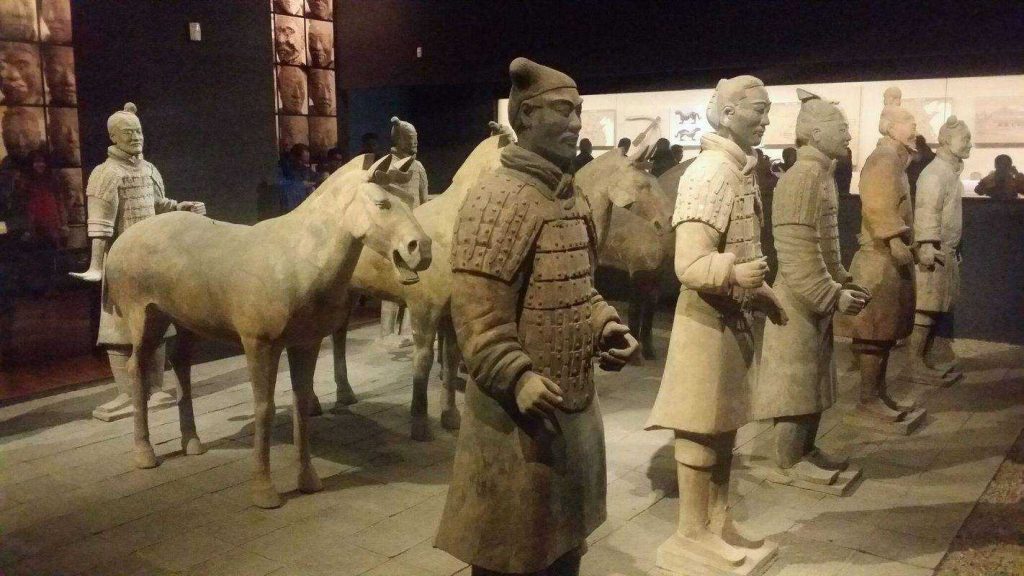
The emperor’s tomb complex is a massive memorial to a man that history remembers as both brilliant and brutal. Many parts of his rich tomb remain unexplored because current archeological technology advanced enough to preserve the priceless artifacts held rche within The tomb complex of the Qin emperor, at 21. 7 square miles (56.25 km2), is best described as an underground palace with stables and an inner and outer city. Han dynasty historian Sima Qian detailed the construction effort, he wrote of the vast effort required to build the emperor’s final resting place. Over 700, 000 conscript and slave laborers built the tomb to hold the numerous treasures within, rivers of mercury, constellat of pearls and gems embedded into the ceiling, plus an assortment of valuables the emperor would artisans who worked on the mausoleum lest they reveal its secrets.
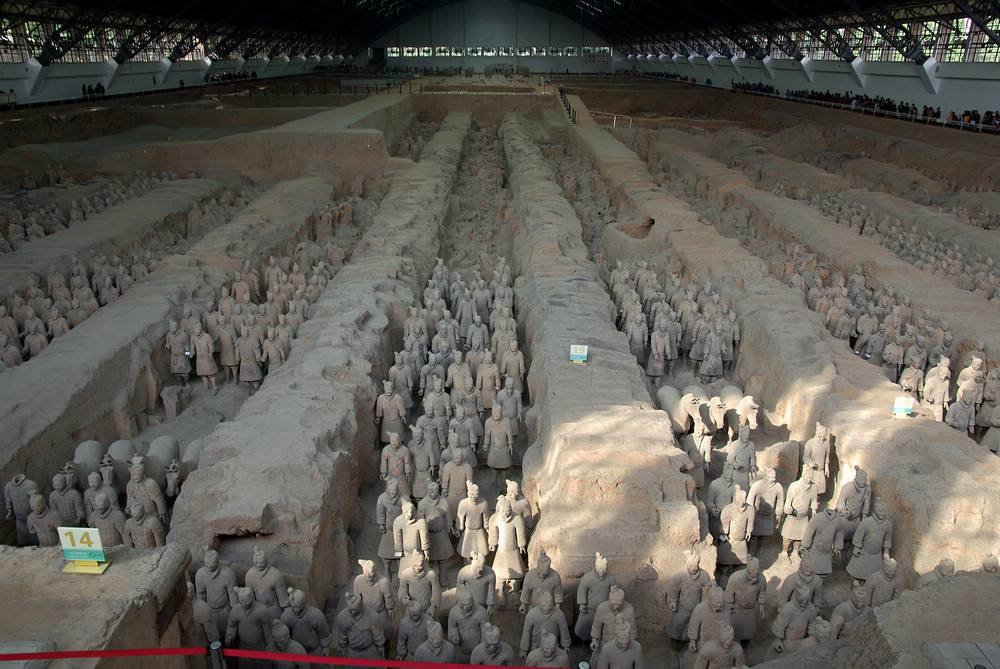
Today Qin Shihuang’s unopened vault, 0.9 miles (1. 5 km) from the Terracotta Warriors,still guards its secrets. The nondescript grassy mound above the vault is surrounded by trees. On peaceful sunny days, the wind blows yellow earth across the countryside, what maylie underneath belies the humble surroundings and tantalizes the imagination.
The Terracotta Warriors(bingma yong兵马俑) form only part of the Qin emperor’s’ tomb complex. They may have remained forgotten had it not been for the fortuitous discovery by local peasants drilling well in1974. What they found would excite the archeology world.
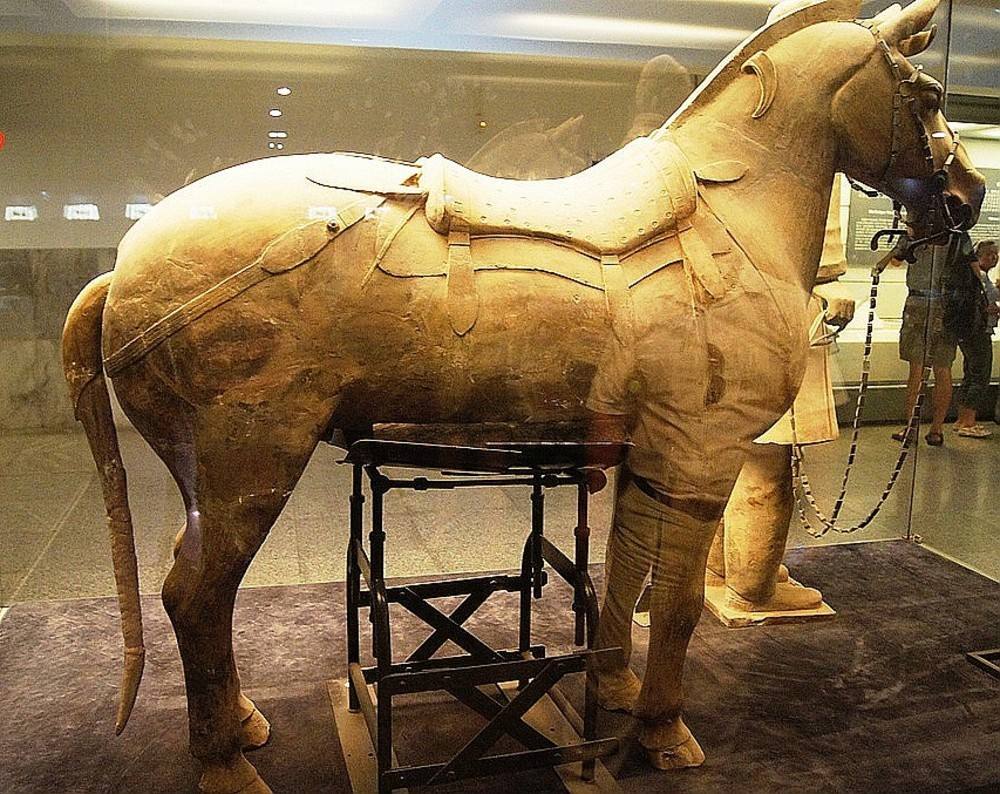
In a vault of approximately 3 acres (12,000 m2 tta infa stood some 8, 000 terracotta infantry soldiers, archerers hlying some 16 feet (5 underground, andr’s ims, cavalrymen and chariots arranged in battle formation, ready to defend their emperor’s immortal soul. Each soldier is pproximately 71 inches (1. 8 m) tall, with higher-ranking soldiers being taller, and madeick (7.6 cm) clay. trunk, limbs and hands Each part of the hollow body was made separately. While the oduced, the heads were individually constructed and the face of each warrior is distinct. It has been theorized the faces were sculpted from the likeness of the soldiers and artisans. The terracotta sculptures show a high level of artistry with individualized facial expressions, hairstyles and clothing and were once brightly painted with black armor, colorful red scarves and green pants, though the colors have long faded. As warriors, they each held weapons: bronze swords, spears, axes and halberds which were still sharp when discovered- and longbows and crossbows.
Three pits containing warriors are open; a nearby fourth pit was found empty. The pitsare still being excavated and in many, warriors lay toppled as if they fell in combat.

Shattered and headless statues give the eerie sense of viewing the carnage of an ancient battlefield. Though a daunting task, archeologists continue to piece together the broken remains of those warriors who lost their battle against time.
